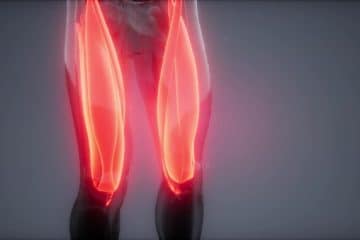Neck pain is all too common, yet it isn’t something most people think about until they are experiencing it for themselves. Almost everyone has woken up from time to time with a kink in their neck that results in decreased mobility and discomfort. Others might experience frequent neck stiffness and pain that flares up in certain situations. While some neck pain can be due to trauma or an injury, most are environmental, meaning there are steps you can take to reduce your chances of experiencing this discomfort.
Typically neck pain will be predominately centered in either the front or the back of the neck. Depending on where your pain is focused, there are actions you can take to minimize the stress on this all-important muscle group.
Pain in The Front of the Neck
When you are experiencing pain along the front of your neck, it is usually due to stress placed on the sternocleidomastoid muscle. The sternocleidomastoid is the largest muscle in the front of the neck, and extends from just under your ear and jaw, down to your collarbone. Pain in this area can be due to several different reasons.
1. Tension
Everyone naturally holds tension in different areas of their body. Being aware of where you tend to tense up can help you actively take the necessary steps to decrease tension in that area. If you are someone who is more prone to neck tension, there are things you can do to naturally reduce the stress you are holding in your neck area. Learning some relaxing, deep breathing techniques can help, as does maintain good posture. Regular exercise is also a great way to reduce tension throughout your body.
2. Sleep Posture
As mentioned previously, waking up with a stiff and sore neck is not uncommon. But why does this happen? Give some thought to your sleep posture and how it is impacting your neck alignment. Look at your pillow and think about the position it is putting your neck in throughout the night. If you travel often, consider bringing your own pillow to ensure a good night’s sleep.
3. Your Teeth
Grinding or clenching your teeth at night can create tension throughout your jaw and neck, so definitely consider this if you are often waking up with neck pain. Ask your partner if you are grinding at night or ask your Dentist to analyze your wear pattern at your next appointment. You might want to invest in a night appliance to decrease the pressure on your teeth and jaw when you are sleeping.
4. Review Your ‘Mat’ Work
When you are exercising on the floor, consider any stress you are putting on your neck during any abdominal or forward flexion exercises. Exercises like sit-ups or crunches can place considerable strain on your neck muscles. If your deep neck stabilizers have poor activation, endurance, and strength, your sternocleidomastoid muscle will engage to help stabilize your neck, which in turn will cause it to fatigue. When doing mat work, consider decreasing your repetitions or looking for ways to decrease the load being placed on your neck muscles. Cupping your head or neck with your hands can make a big difference.
Exercises for the Front of Your Neck
1. Neck Rotations:
Neck Rotations are a great way to dynamically stretch your neck muscles, helping to improve mobility.
Begin in good posture, sitting or standing in an upright position that elongates your spine and opens your chest and shoulders. Rotate your neck to one side. Return to the starting position and repeat the movement in opposite direction.
 |
 |
Start with 1 set of 5 repetitions in each direction.
2. Neck Tilts:
Neck Tilts helps to statically stretch the sternocleidomastoid.
Begin in good posture, sitting or standing in an upright position that elongates your spine and opens your chest and shoulders. Rotate your neck to one side, to about a 45-degree angle, then tilt your head back to look upward. Hold this position for 5 – 20 seconds, looking for a light stretch along with your sternocleidomastoid muscle. Relax and return to the starting position. Repeat the movement on the opposite side.
 |
 |
Start with 1 set of 2 repetitions on each side, holding for 5 – 20 seconds.
Pain in The Back of the Neck
Neck pain along the back of your neck is most often a result of poor body alignment and bad habits that place unnecessary stress on your neck muscles. The two most common causes of neck pain along the back of your neck are:
1. Poor Posture
Most people don’t consider their posture until it has already become a problem. Usually, symptoms of poor posture develop over a prolonged period of time. By then, your bad habits are ingrained and difficult to change. Do your best to focus on correcting your posture throughout the day.
2. Staying in the Same Position for a Long Period of Time
If you spend most of your day driving, sitting behind a computer, or hunched over your handheld device, you are at a higher risk for neck pain. In fact, the term, ‘Text Neck’, has recently been termed to describe the poor posture created by leaning forward for long periods, like when reading or using your handheld device. This stooped posture often causes cervical pain and headaches. The further you move your head away from your body, the more stress and strain it places on your neck, more specifically the muscles along the back of your neck. To better understand the tension this position puts on your neck, place your fingers along with the back neck muscles and feel the increase in tension as you move your neck into different forward positions.

Both prolonged periods of poor posture and staying in the wrong position for a long time can lead to a chronic shortening of your neck muscles, which keeps you in poor posture and limits your mobility… which further aggravates any pain or discomfort you may be experiencing. It truly is a vicious cycle.
Exercises for the Back of Your Neck
1. Chin Tucks
Begin in good posture, sitting or standing in an upright position that elongates your spine and opens your chest and shoulders. Slightly shift your head back and retract your chin inward, creating a ‘double chin’. Hold this position for 2 – 5 seconds. Relax and repeat the movement.
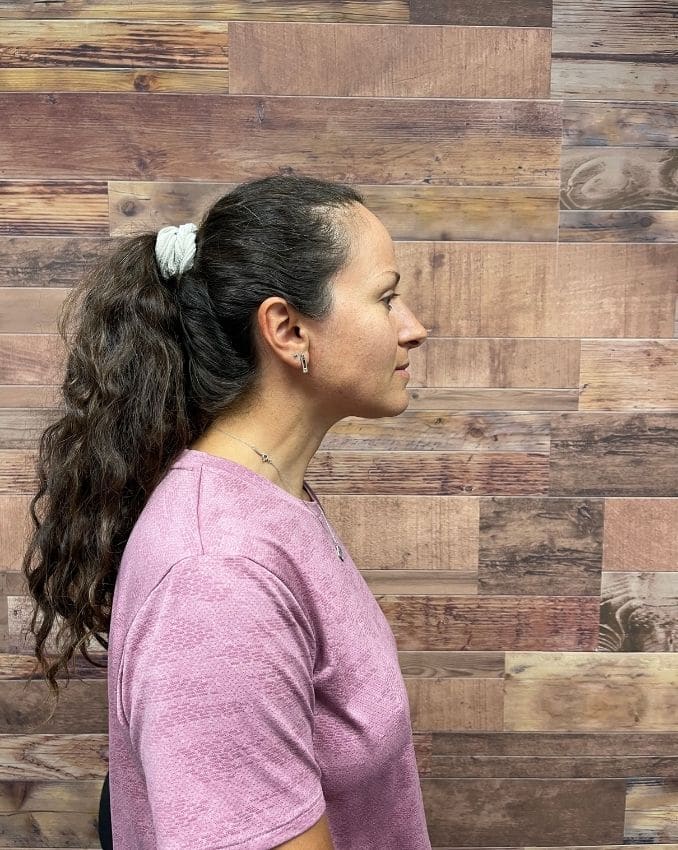 |
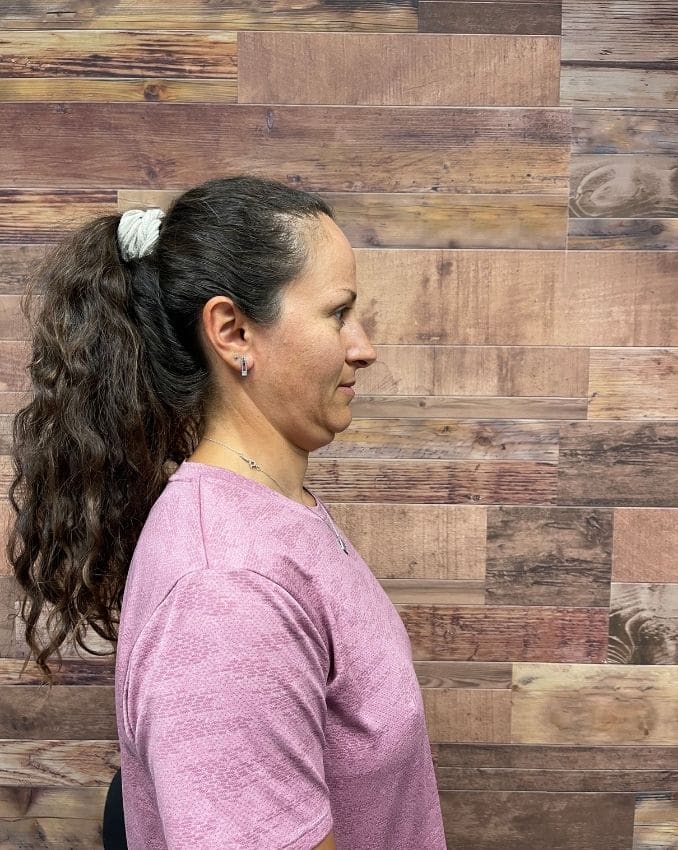 |
Start with 1 set of 5 repetitions, holding for 2 – 5 seconds.
2. Forward Head Tilts
Begin in good posture, sitting or standing in an upright position that elongates your spine and opens your chest and shoulders. Slightly shift your head back and retract your chin inward, then lower your chin towards your neck. Hold this position for 5 – 20 seconds. Relax and repeat the movement.
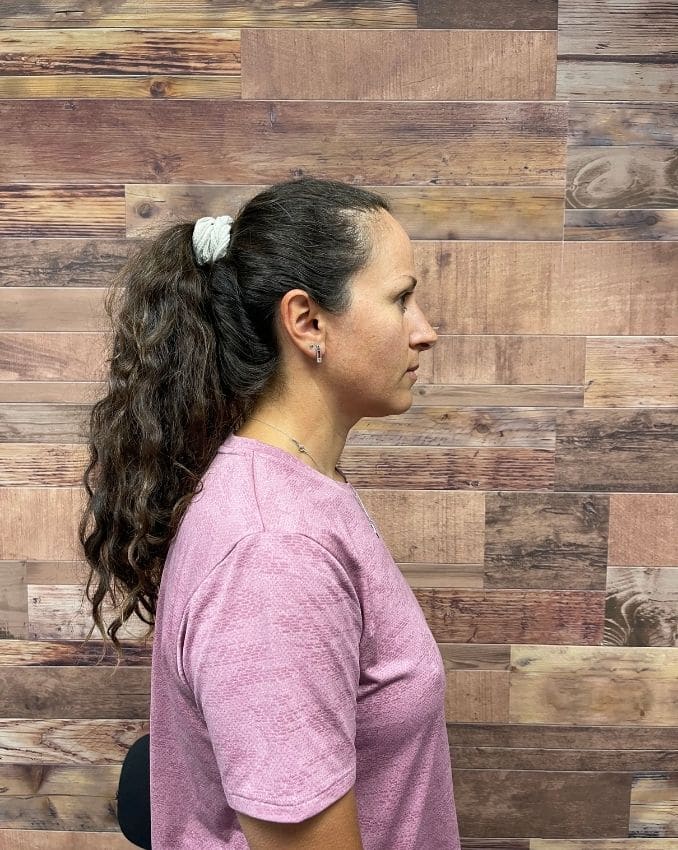 |
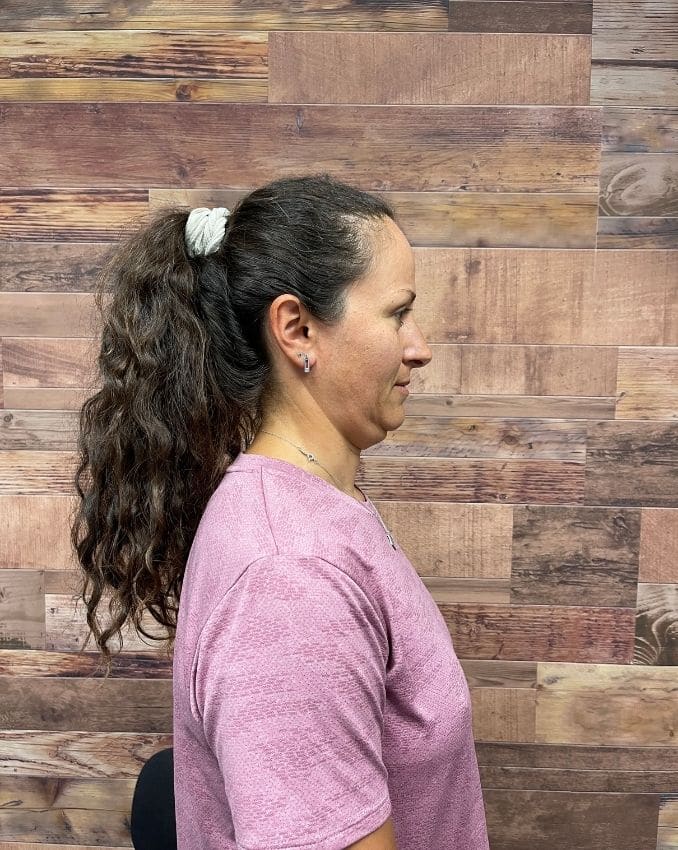 |
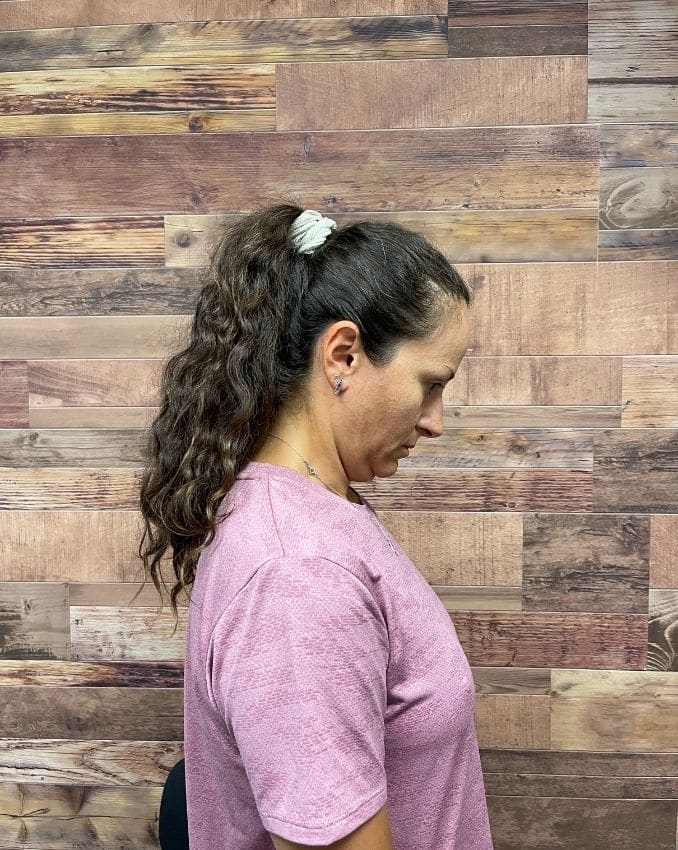 |
Start with 1 set of 2 repetitions, holding for 5 – 20 seconds.
When you are doing any neck exercises, it is important to start gingerly and slowly. If you stretch your neck muscles to excess or complete too many repetitions, you run the risk of antagonizing your neck muscles even further and prolonging your recovery. Heat and some gentle self-massage can also be helpful, so also invest in some self-care. Remember, in order to maintain optimal ‘neck health’, you need to have sufficient muscle activation, endurance, and strength, so the best recommendation is to do whatever you can to prevent placing unnecessary stress on your neck. For any serious concerns about neck mobility or discomfort, it might be helpful to consult with a Physical Therapist, however, you don’t want your behaviors outside of the therapist’s office to counteract any of the healing taking place in that appointment.
You never have to suffer from debilitating neck pain again. Learn the all-natural solution to eliminating your neck pain once and for all here.








